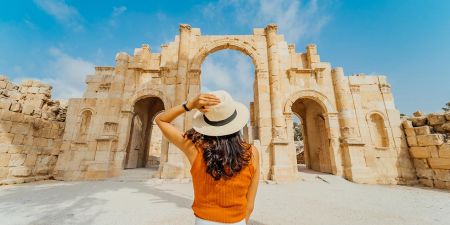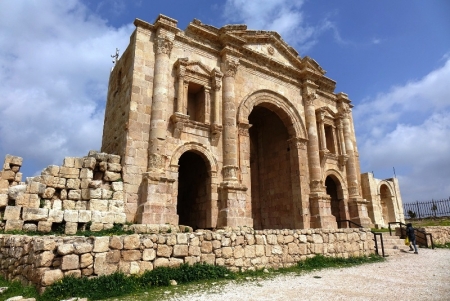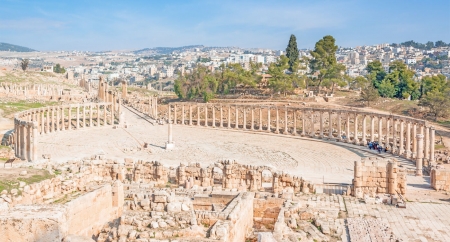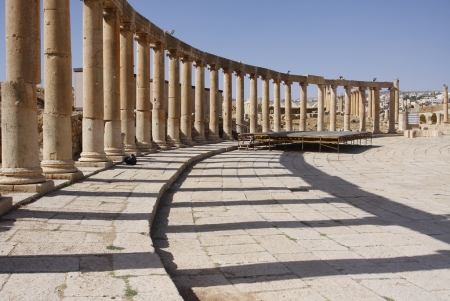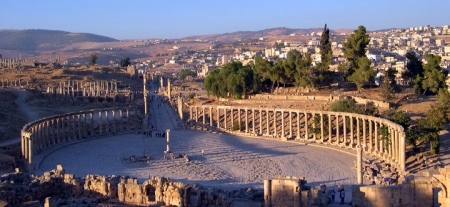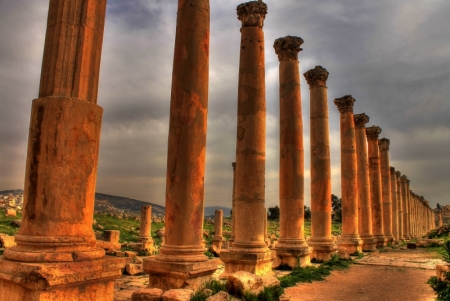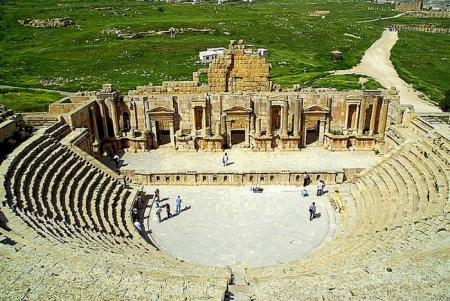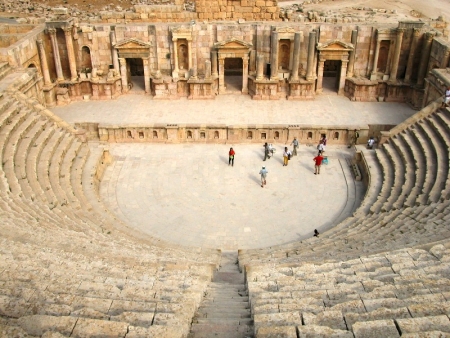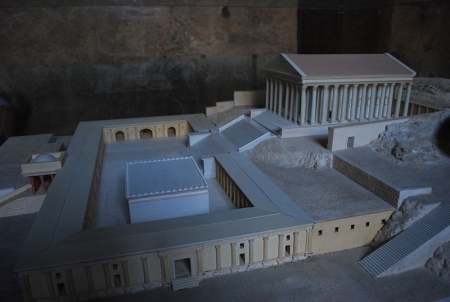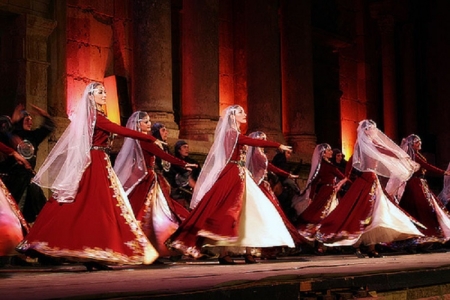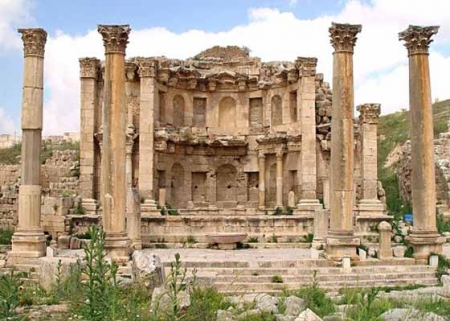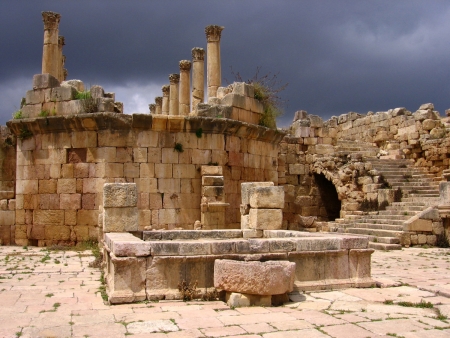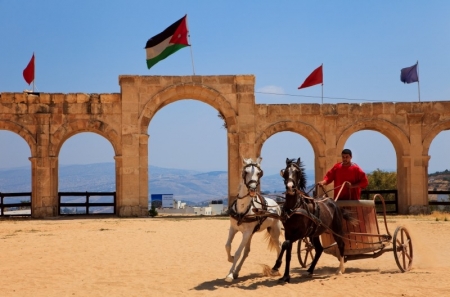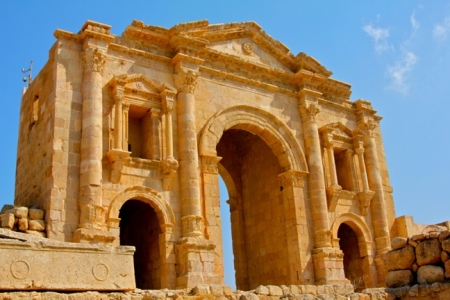The City of Jerash
The City of Jerash: Jerash lies on a plain surrounded by hilly wooded areas and fertile basins. Conquered by General Pompey in 63 BC, it came under Roman rule and was one of the ten great Roman cities of the Decapolis League. Know More!

Jerash lies on a plain surrounded by hilly wooded areas and fertile basins. Conquered by General Pompey in 63 BC, it came under Roman rule and was one of the ten great Roman cities of the Decapolis League.
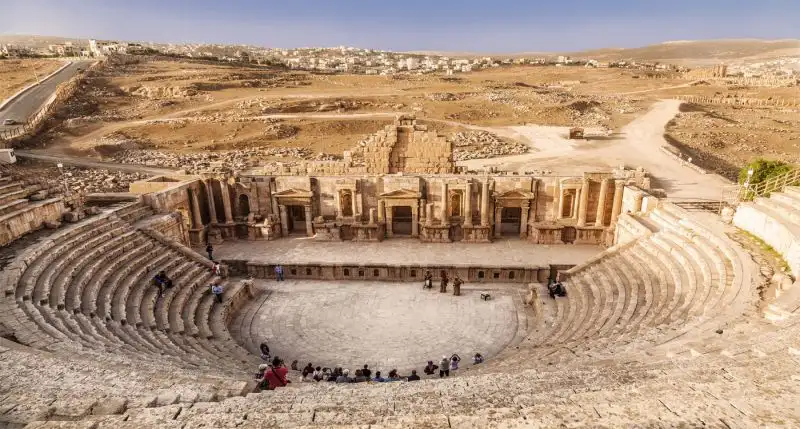
Ancient City of Jerash
Ancient Jerash was an open city of freestanding structures richly embellished with marble and granite. Its engineering was so advanced that large parts of the city still survive today. Much more has been painstakingly restored by archeological teams from around the world. The main attractions in Jerash are, not surprisingly, the ruins themselves. Jerash is internationally acknowledged as one of the best-preserved province cities of the Roman Empire.
A Walk Down Memory Lane in Jerash
a)The Genesis of Jerash
Jerash, or Gerasa as it was originally known, humbly began its journey on the world map more than 6500 years ago. The city's foundation is often attributed to veterans of Alexander the Great's military campaigns around the early fourth century B.C. This claim, however, is more of a lore, as the actual city was likely established by the second-century B.C. Seleucid king, Antiochus IV Epiphanes. The city acquired its original name, Antiochia ad Chrysorrhoam, meaning "Antioch beside the river of gold" in Greek, during this period. The Greek influence was heavily prominent in the city's nascent stages, shaping its culture and architecture significantly.
Customize Your Dream Vacation!
Get in touch with our local experts for an unforgettable journey.
Plan Your Tripb) The Seleucid Era: A Time of Cultural Confluence
The Seleucid era marked the beginning of the city's cultural evolution. The Seleucid kings, the descendants of Alexander the Great's general Seleucus I Nicator, were instrumental in the proliferation of Greek customs and culture across the Middle East. Their influence was evident in the city's architecture, with several Greek-styled temples dotting the landscape of Jerash.
The city's strategic location on the King's Highway, a significant trade route, attracted a diverse populace. Greek colonists, indigenous Aramaeans, and traders from far-off lands like Persia, Parthia, and India converged in Jerash, fostering a unique cultural confluence.
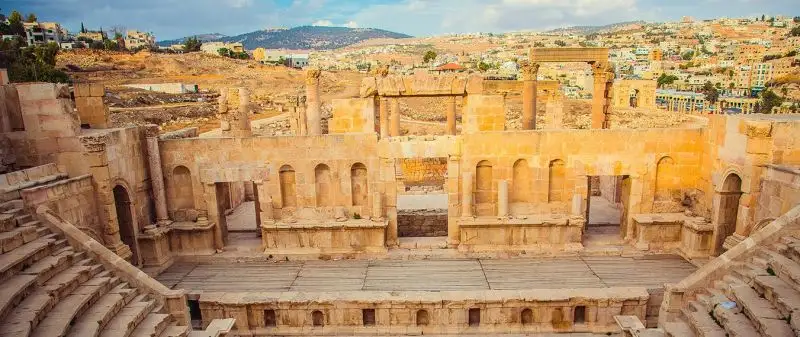
c) The Roman Conquest: A Period of Prosperity
Jerash's fate took a turn for the better with the advent of the Romans. Following General Pompey's annexation of the province of Syria in 64 B.C., Jerash fell under Roman rule. The city was conferred a special status as one of the Decapolis, a group of semi-independent Hellenistic cities. This status propelled Jerash into an era of unprecedented growth and prosperity.
The city's golden period coincided with the reign of Emperor Trajan in the second century. Trajan incorporated Jerash and its surrounding lands into the new province of Arabia Petraea. The city's wealth, derived from its strategic position on the trade route, was invested in ambitious architectural projects, including the magnificent Temple of Artemis and Hadrian's Arch.
The city's golden age came under Roman rule, during which time it was known as Gerasa, and the site is now generally acknowledged to be one of the best-preserved Roman provincial towns in the world.
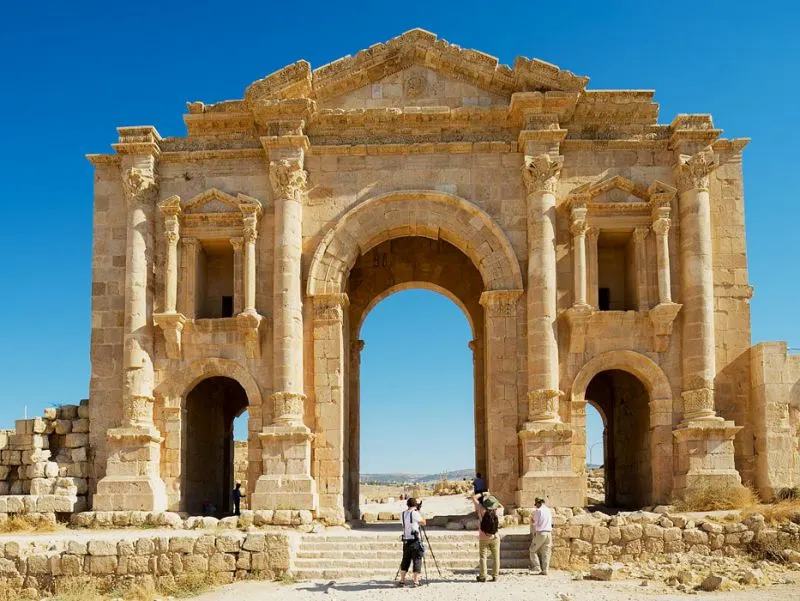
d) The Byzantine Influence: Christianity Takes Root
The fourth century ushered in the Byzantine era in Jerash, with the city falling under the rule of the Byzantine Empire. The city's religious landscape transformed, with numerous Christian churches replacing the Roman temples. This change reflected the gradual acceptance of Christianity as the state religion under Byzantine rule.
e) The Islamic Conquest and the Earthquake
The Islamic conquest of the region in the seventh century marked the end of the Byzantine influence. However, the city continued to thrive under the Umayyad Caliphate.
Jerash's downfall began with a devastating earthquake in 747 AD, which decimated most of the city. The city never fully recovered from this catastrophe and eventually fell into obscurity.
The Rediscovery of Jerash
The history of Jerash was lost in the sands of time until its rediscovery in the early 19th century. The meticulous excavation and restoration efforts that followed have brought to light the grandeur of this ancient city. Today, Jerash is globally recognized for its well-preserved Roman ruins, second only to Italy, standing as an enduring testament to the city's glorious past.
The modern city of Jerash can be found to the east of the ruins. While the old and new share a city wall, careful preservation and planning have seen the city itself develop well away from the ruins so there is no encroachment on the sites of old.
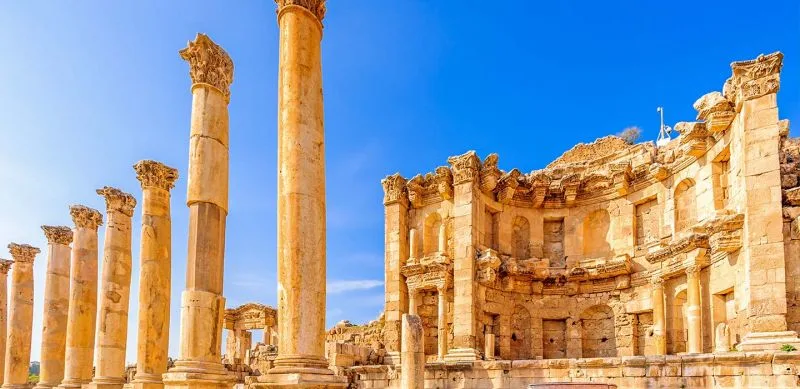
With its awe-inspiring ruins and a rich tapestry of history, the ancient city of Jerash continues to captivate the imagination of history buffs and travelers alike. As you walk down the colonnaded streets, take a moment to appreciate the intricate mosaics, monumental arches, and grand amphitheaters. Each brick, each stone, and each pathway in the city whispers tales of a bygone era, transporting you back in time, to the heart of the ancient Roman Empire, right here in Jordan.

